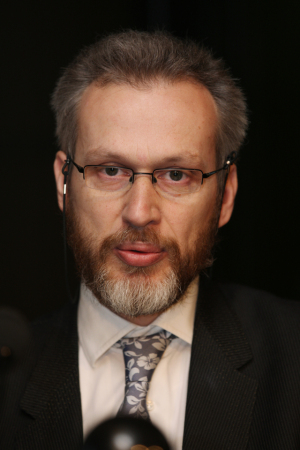ECR: CT scans help antiques sleuth
by
Brendon Nafziger, DOTmed News Associate Editor | March 04, 2011

Dr. Marc Ghysels.
A former interventional radiologist says he has found an unusual role for computed tomography scanners: helping to authenticate antique sculpture, sorting out fakes and forgeries from the real thing.
"[M]ost sculptures pass easily through any CT scanner, generating 3-D images which literally 'undress' the art work and reveal its internal structures and secrets," said Dr. Marc Ghysels, 50, in a statement.
In a talk to be presented Saturday at the European College of Radiology's 2011 annual meeting in Vienna, Ghysels will show how radiological analysis of sculpture can help expose the tricks of forgers that often hoodwink art experts and stump other methods of scientific analysis, such as thermoluminescence.
In a 2003 article in Art Tribal magazine, Ghysels said CT scans are especially useful for terracotta objects, as they can reveal if previously fired clay objects were later carved or re-shaped by forgers. Thermoluminescence testing shows approximately when the object was last fired, and can thus be outwitted by making new objects out of old -- but transformed -- materials.
Applying CT scans to antiquities research isn't new, Ghysels said. In 1979, the year the Nobel Prize in Medicine was awarded to the inventors of the CT scanner, Dr. Derek Harwood-Nash published the first study documenting a mummy scan in the Journal of Computer Assisted Tomography.
"This is an atypical application for radiology which, although it is not new, has great potential for development as the number of authentic artworks now being found is dwindling every day and copies or fakes are invading the art market, whether in Chinese antiquities, African art or pre-Columbian terracotta," Ghysels said.
Ghysels, based in Belgium, worked in hospitals for 15 years before applying his radiological skills to the art world. He specialized in interventional radiology at Erasme Hospital in Brussels, Thomas Jefferson Hospital in Philadelphia and Hammersmith Hospital in London, according to information provided by the European Society of Radiology.
|
|
|
You Must Be Logged In To Post A Comment
|
